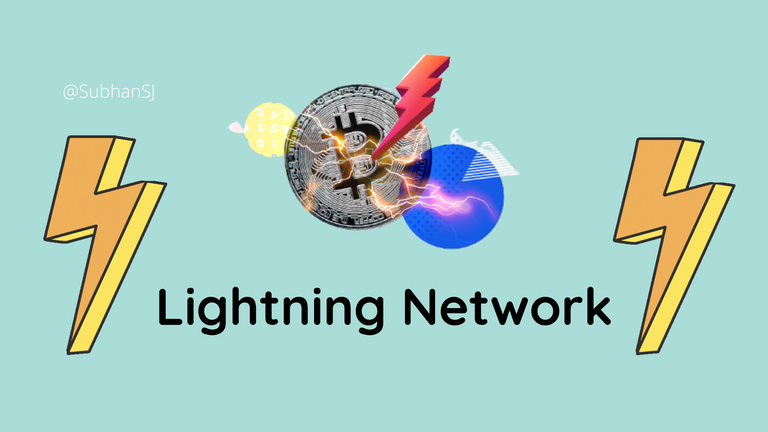
What is lightning network?
The Lightning Network extends Bitcoin's blockchain by adding an extra layer that allows people to create payment channels between any two parties on that layer. Because these channels are set up between two persons, transactions will be practically instantaneous, and fees will be incredibly low.
Not only does the Lightning Network make Bitcoin payments faster and cheaper, but it also opens up an universe of microtransaction possibilities that aren't conceivable in the existing financial system.
How it works?
The Lightning Network is made up of channels that enable the near-instantaneous transactions between system participants. Lightning is based on the premise that not every transaction needs to be recorded on the blockchain. Instead, only the channel creation and exit transactions are recorded on chain; all other transactions are recorded in the Lightning Network.
For example, if two users desire to send money to each other on a regular basis, they can create a channel by adding funds to a multi-signature (multisig) wallet. They can then use these funds to carry out an endless number of transactions. Off-chain transactions are transactions that are recorded using a sort of digital ledger that is safeguarded by a time clock.
This is how the Lightning Network could one day provide a solution to the never-ending debate over buying a cup of coffee with Bitcoins. It appears that doing so through the Lightning channel network might just work, as it will be a near-instance purchase with no costs.
Cross-chain atomic swaps, which are token transfers between various blockchains, are another exciting element of the Lightning Network that is currently being tested.
Privacy
Lightning transactions are not recorded on the blockchain and are transferred through onion routing by default, allowing users to transact bitcoin in a more private manner than conventional Bitcoin transactions.
Who developed it?
Joseph Poon and Thaddeus Dryja first described Lightning Network in a white paper in 2015, the current version of the white paper can be viewed here. Blockstream, Lightning Labs, and ACINQ, with assistance from other members of the Bitcoin community, are now responsible for the majority of the work on the Lightning Network's development.
Now lets talk about it’s Pros & Cons
Pros
Transaction Speed You won't have to wait for many confirmations for each transaction once the network is operational. No matter how busy the network gets, the transactions will be almost instantaneous. If this occurs, the bitcoin industry will make significant progress toward competing with existing payment systems such as Visa, MasterCard, and PayPal.
Transaction fee You will only have to pay the tiniest fees because the transactions will take place within the Lightning Network channels rather than on the blockchain. One of the key benefits of the Lightning Network is that it allows Bitcoin to be used as a method of payment at shops, cafes etc.
Smaller payments - as little as 0.00000001 BTC, or one Satoshi – can be made using lighting.
- Anonymity and security. The vast majority of cryptocurrencies do not offer complete anonymity. From one wallet to the next, the transitions can still be traced. However, because most Lightning Network transactions take place outside of the main blockchain, any micropayments made via Lightning channels will be nearly impossible to track.
Cons
- Not fully functional. Perhaps the biggest disadvantage of the Lightning Network right now is that it isn't completely operating yet, so it's impossible to say how good it really is. Furthermore, the concept seems excellent on paper, but it's impossible to know whether it'll look as good in reality.
- Bitcoin transaction fees are charged when a channel is opened and closed. Users interested in joining the Lightning Network should look for opportunistic times when Bitcoin transaction fees are low (e.g. on weekends).
Transactions can only be completed when all parties involved are online.
- The channel's complexity. The Lightning Network is envisioned as a system of channels that, if built, should theoretically enable for smooth transactions to take place. However, there is no way of knowing what will happen if the payment must travel a circuitous route. Fees will undoubtedly build up if your transaction must pass through dozens of intermediary channels.
Resources:
Cointelegraph
Earn some free Crypto here:
Daily faucets with instant payouts and solid referral programs - GetZen, PipeFlare.
Browser that Mine Bitcoins Cloud Based Mining.
Posted Using LeoFinance Beta